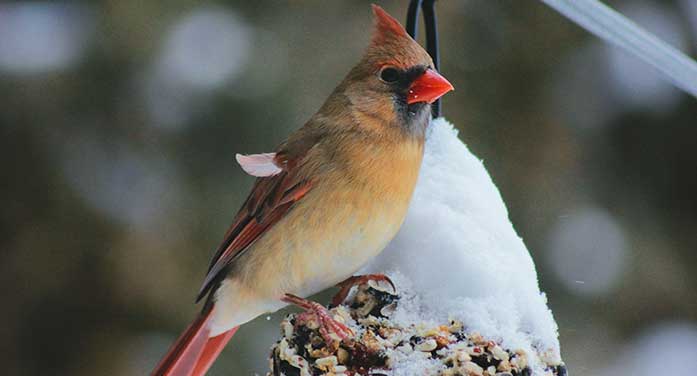 As winter settles in and the cold enshrouds our northern landscape, we expect the woods to be pretty quiet, with only the rustling of windblown leaves and the occasional chirp of a chickadee or the scolding of a red squirrel. But what’s that? Is that bird singing its spring song when it’s so cold outside?
As winter settles in and the cold enshrouds our northern landscape, we expect the woods to be pretty quiet, with only the rustling of windblown leaves and the occasional chirp of a chickadee or the scolding of a red squirrel. But what’s that? Is that bird singing its spring song when it’s so cold outside?
By gosh, it is. But why?
For decades, I’ve known that many birds sing in September and October. I always presumed the only reason birds sing in the fall is because the young males are full of hormones and excited to get on with the business of breeding, even though that won’t happen for several more months when spring returns.
Now, when cool days and nights predominate, we hear snippets of a weak, unstructured song or the jumbled notes of a young bird as it tries to mimic the beautiful spring songs of its elders.
PREMIUM MEMBERSHIP CONTENT |
| 674 words Reading Time: 3 minutes |
| Click for contact info and author image NEED HELP? Contact us at [email protected] |
| NOT YET A PREMIUM MEMBER? LINK TO YOUTUBE VIDEO IN DOWNLOAD DOCUMENT |
Sometimes adult males will offer these strange songs in the fall as well. These are often called subsongs and, in some cases, are so distorted it’s hard to tell which species is making them as they often mimic parts of other species’ songs.
There’s now evidence that some species start learning their song while still in the egg – kind of like us talking to our unborn child in the womb so they get used to our voice. Certainly throughout the nesting cycle, when the little guys are growing up, they hear the male’s song and start to learn it. But almost invariably, they’re not very good at it.
Rest assured, by next spring, when they’ve practised more on their wintering grounds, they will come back and sing the songs very well.
Sometimes I hear what’s called a whisper song, which is a very soft, almost inaudible rendition of a song that’s uttered by adult birds usually early in the breeding season. Essentially, it’s a very muted version of their song, sung from inside the forest canopy. It’s so subtle that the birds don’t even appear to be singing as the beak is rarely opened as in ‘normal’ song.
These are usually given by a sexually mature male in the presence of a female (which may or may not be visible), but rest assured the nest is likely nearby. Whisper songs tend to be precise and repetitive in their basic elements. It’s not just a jumble of random notes that may be typical of a subsong; it’s an actual – albeit quieted – song.
Just in case you think you have this all figured out, there’s one more phenomenon – autumnal recrudescence, which occurs when fall days are roughly as long as the days of the spring mating season. Birds then experience a hormonal surge that triggers singing by males, even though they will not be breeding for many months.
Picture a cardinal in January starting to sing its song well before we think it should. The song may not be prolonged but is pure and often more evident on bright sunny days. As late winter and spring progress, the song becomes louder, more frequent and prolonged, until it reaches its climax well into the breeding season.
But why don’t birds just sing anytime using their full breeding season song?
Many can’t because they don’t know the song yet (young males) or haven’t perfected it yet (late winter males, young or mature), while others await the hormonal triggers that make song viable and necessary.
To sing all year is also dangerous to the species as they often do so from exposed perches and therefore are more visible to predators.
And, of course, one must consider the energy balance: if you’re singing, you’re using calories and not eating so likely you’re in a caloric-deficit situation. See how important diet is.
So song may occur at almost any time of year, but it’s offered in response to different stimuli and will certainly have different outcomes depending on the season.
Geoff Carpentier is a published author, expedition guide and environmental consultant. Visit Geoff on LinkedIn, Instagram and Facebook. For interview requests, click here.
The opinions expressed by our columnists and contributors are theirs alone and do not inherently or expressly reflect the views of our publication.
© Troy Media
Troy Media is an editorial content provider to media outlets and its own hosted community news outlets across Canada.




